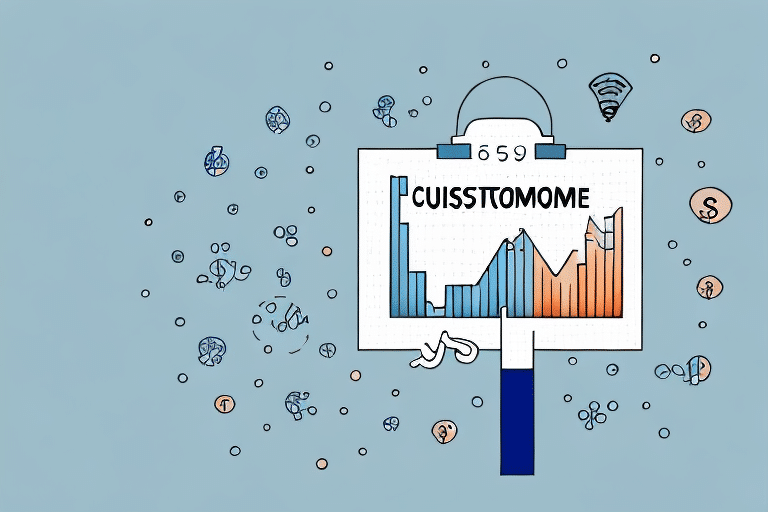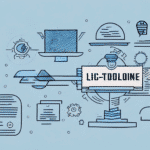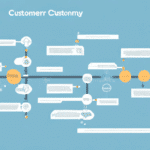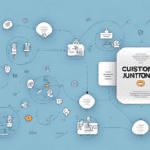Why Customer Retention is Important for Business Success
Building a loyal customer base is vital for any business that wants to grow and thrive in today's competitive market. Retaining customers is more cost-effective than attracting new ones; studies show that acquiring a new customer can cost five times more than retaining an existing one (Harvard Business Review). Satisfied customers often spread the word to their friends and family, leading to referrals and increased business. Moreover, customers with a positive experience tend to be more loyal, making repeat purchases and helping to increase the lifetime value of the customer.
Companies that prioritize customer retention efforts are likely to see an increase in sales, higher revenue, and better profit margins in the long run. Another benefit of customer retention is that it allows businesses to gather valuable feedback from their customers. By maintaining a relationship with their customers, businesses can gain insights into what their customers like and dislike about their products or services. This feedback can be used to improve the quality of the products or services offered, leading to increased customer satisfaction and loyalty.
Furthermore, customer retention can help businesses establish a strong brand reputation. When customers have a positive experience with a business, they are more likely to share their experience with others, resulting in positive word-of-mouth marketing. This can help attract new customers and build a strong brand reputation, which is essential for long-term success in today's competitive market.
The Difference Between Customer Retention and Acquisition
Customer retention and customer acquisition are two different concepts, and both play a critical role in the success of a business. Customer retention refers to the efforts made to keep existing customers coming back to your business through excellent customer service, product quality, and other incentives. In contrast, customer acquisition refers to the strategies and tactics used to attract new customers to your business and convert them into paying customers.
While customer acquisition is essential for growth, retaining existing customers is more profitable for businesses in the long run. According to research by Invesp, increasing customer retention rates by 5% can increase profits by 25% to 95%. Therefore, it is crucial to strike a balance between the two to achieve maximum business success.
How to Calculate Customer Retention Rate and Why it Matters
Calculating customer retention rate is a vital aspect of understanding how well businesses are retaining their customer base. Customer retention rate refers to the percentage of customers that a business has retained over a specified period. To calculate the customer retention rate, use the following formula:
- Customer Retention Rate = ((E - N) / S) x 100
Where:
- E = Number of customers at the end of the period
- N = Number of new customers acquired during the period
- S = Number of customers at the start of the period
Customer retention rate is an essential metric for businesses to track. A high customer retention rate indicates that a business is effectively satisfying its existing customer base and building loyalty. On the other hand, a low customer retention rate may imply that a business is not meeting its customers' expectations, leading to dissatisfaction and eventual loss of customers.
The Psychology Behind Customer Loyalty and Retention
Understanding the psychology behind customer loyalty and retention is essential for businesses aiming to improve their customer retention rates. Customers remain loyal to companies that offer them value, a sense of belonging, personalized attention, and exceptional service. Additionally, customers tend to stay loyal to companies they trust and perceive as empathetic and caring.
Therefore, businesses should focus on:
- Building Strong Relationships: Engage with customers on a personal level to foster a sense of connection.
- Providing Personalized Service: Tailor experiences and communications to individual customer preferences.
- Offering Unique Experiences: Differentiate your brand by providing memorable and unique customer interactions.
By addressing these psychological factors, businesses can create a loyal customer base that is more likely to return and advocate for the brand.
Strategies for Improving Customer Retention in Your Business
Several strategies can help businesses improve customer retention rates and increase customer loyalty:
- Excellent Customer Service: Ensure that customers receive prompt, helpful, and friendly service at all touchpoints.
- Loyalty Programs: Implement programs that reward repeat customers with discounts, rewards, or exclusive offers.
- Personalized Experiences: Use customer data to tailor experiences and communications to individual preferences.
- Addressing Customer Feedback: Actively seek and respond to customer feedback to demonstrate that their opinions are valued.
- Valuable Content: Provide relevant and useful content through blog posts, newsletters, or social media to engage customers.
Additionally, fostering a positive work culture focused on the customer, providing professional development opportunities for employees, and building strong relationships between employees and customers can significantly enhance retention efforts.
The Role of Customer Service in Boosting Retention Rates
Excellent customer service is critical for businesses that want to improve their customer retention rates. Customers who have positive interactions with customer service are more likely to continue doing business with the company. To enhance customer service, businesses can:
- Provide Comprehensive Training: Equip customer service representatives with the skills and knowledge needed to address customer needs effectively.
- Streamline Communication Channels: Offer multiple channels for customers to reach out, such as phone, email, live chat, and social media.
- Promptly Address Complaints: Ensure that all customer complaints are resolved quickly and satisfactorily.
Companies that prioritize customer service and integrate it into the overall customer experience will see a significant improvement in their customer retention rates.
Common Mistakes to Avoid When Trying to Retain Customers
Retaining customers can be challenging, and businesses should avoid the following common mistakes:
- Neglecting Customer Service: Failing to provide excellent customer service can lead to customer dissatisfaction and loss.
- Ignoring Customer Complaints: Not addressing complaints promptly can damage trust and lead to churn.
- Lack of Personalization: Failing to personalize communications or experiences can make customers feel undervalued.
- Using Aggressive Sales Tactics: Overselling products or services can pressure customers and push them away.
By avoiding these mistakes, businesses can create a more positive and engaging experience for their customers, fostering long-term loyalty.
Using Data Analytics to Improve Customer Retention
Data analytics is a powerful tool that businesses can use to improve customer retention rates. By analyzing customer data, businesses can gain insights into customers' needs, behaviors, and preferences, enabling them to create personalized experiences and better serve their customers. Key applications include:
- Identifying Trends and Patterns: Use data to spot emerging trends that can inform product development and marketing strategies.
- Personalizing Marketing Efforts: Tailor marketing campaigns based on customer behavior and preferences to increase relevance and engagement.
- Predicting Churn: Use predictive analytics to identify customers at risk of leaving and implement retention strategies proactively.
According to a report by Forbes, businesses leveraging data analytics for customer retention can increase their retention rates by up to 20%. By leveraging the power of data analytics, businesses can identify areas for improvement and implement changes that will help enhance their customer retention rates.
Case Studies: Successful Customer Retention Strategies from Top Companies
Examining case studies of top-performing companies that have implemented successful customer retention strategies can provide valuable insights:
Amazon
Amazon is renowned for its excellent customer service, fast delivery times, and easy returns process – all factors contributing to a high customer retention rate. The company's Amazon Prime program, which offers benefits like free shipping and exclusive content, significantly enhances customer loyalty.
Apple
Apple's focus on brand identity and creating a unique customer experience has resulted in a consistently loyal customer base. Their seamless ecosystem of products and services encourages repeat purchases and long-term customer relationships.
Zappos
Zappos emphasizes personalized experiences and exceptional customer service. Their commitment to customer satisfaction, including a 365-day return policy, has built a strong and loyal customer community.
Starbucks
Starbucks has implemented effective customer retention strategies through its loyalty program, mobile app, and personalized customer interactions. These efforts foster a sense of community and encourage repeat business.
Costco
Costco's membership-based model creates a sense of exclusivity and loyalty among its customers. The company's focus on high-quality products and exceptional value reinforces customer retention.
Building a Strong Brand Identity for Better Customer Retention
Building a strong brand identity is crucial for creating a loyal customer base. A strong brand identity should encompass the brand's values, vision, and voice, resonating with its target audience. Businesses that invest in building a strong brand identity can cultivate a loyal following of customers who feel emotionally connected to the brand and are more likely to make repeat purchases.
To build a strong brand identity, businesses must:
- Maintain Consistent Messaging: Ensure that all communications align with the brand's values and voice.
- Create Memorable Experiences: Develop unique and engaging experiences that leave a lasting impression on customers.
- Provide Exceptional Service: Align customer service practices with brand values to reinforce the brand identity.
By focusing on these elements, businesses can establish a compelling brand identity that fosters customer loyalty and retention.
The Future of Customer Retention in the Age of Digital Transformation
With the rise of digital transformation, traditional customer retention strategies are evolving. As more businesses move online, they must adopt new strategies to keep up with evolving technologies and customer expectations. Key trends include:
- Artificial Intelligence: AI is being used to provide personalized experiences and customer service through chatbots and predictive analytics.
- Social Media Engagement: Businesses leverage social media platforms to engage with customers, provide relevant content, and address customer inquiries in real-time.
- Omnichannel Experiences: Offering seamless experiences across multiple channels (e.g., mobile, web, in-store) to meet customers wherever they are.
According to a McKinsey report, companies that effectively integrate digital transformation initiatives into their customer retention strategies are better positioned to meet changing customer needs and maintain high retention rates.
Maintaining High Levels of Employee Engagement to Improve Retention Rates
Maintaining high levels of employee engagement is crucial for businesses aiming to improve their customer retention rates. Engaged employees are more likely to provide exceptional customer service, innovate, and develop meaningful relationships with customers.
Businesses can enhance employee engagement by:
- Providing Training Programs: Offer comprehensive training to equip employees with the skills needed to excel in their roles.
- Fostering an Open and Collaborative Work Culture: Encourage open communication and teamwork to create a supportive work environment.
- Offering Professional Development Opportunities: Provide avenues for employees to grow and advance their careers.
Engaged employees contribute to a positive and customer-centric work culture, which is essential for building strong relationships with customers and enhancing retention rates.
Creating a Culture of Customer-Centricity to Drive Loyalty and Repeat Business
Creating a culture of customer-centricity is essential for driving loyalty and repeat business. Companies that place customers at the center of everything they do develop a loyal customer base that returns repeatedly.
To foster a customer-centric culture, businesses should:
- Train Employees to Prioritize Customer Needs: Ensure that all employees understand the importance of customer satisfaction and are equipped to meet customer needs.
- Provide Personalized Experiences: Tailor interactions and offerings to meet individual customer expectations.
- Actively Seek and Address Customer Feedback: Regularly collect and act on feedback to continuously improve the customer experience.
- Use Customer Data to Inform Decisions: Leverage data analytics to make informed business decisions that enhance the customer experience.
- Continuously Improve the Customer Experience: Implement ongoing improvements based on customer insights and changing preferences.
By embedding customer-centricity into the company culture, businesses can create an environment that consistently meets and exceeds customer expectations, fostering long-term loyalty.
Measuring the ROI of Investing in Customer Retention Strategies
Measuring the return on investment (ROI) of investing in customer retention strategies is essential for determining their effectiveness. Businesses can measure the ROI of customer retention strategies by calculating the Customer Lifetime Value (CLV) and comparing it to the cost of acquiring and retaining customers.
The formula for calculating CLV is:
- CLV = (Average Purchase Value) x (Purchase Frequency) x (Customer Lifespan)
By understanding CLV, businesses can assess how much they should invest in retention strategies to maximize profitability. According to a report by Marketing Land, businesses that effectively increase their CLV see a substantial boost in their overall ROI.
Strategic investments in customer retention lead to a higher ROI, as a loyal customer base results in repeat purchases, referrals, and valuable feedback for improving products and services.
Conclusion
Customer retention is an essential component of achieving long-term business success. Retaining customers is more cost-effective than acquiring new ones, and satisfied customers are more likely to make repeat purchases, provide referrals, and offer feedback for continuous improvement. To improve customer retention rates, businesses must:
- Provide exceptional customer service
- Offer personalized experiences
- Create a culture of customer-centricity
By investing in customer retention strategies and measuring their ROI, businesses can build strong and loyal customer bases that help them grow and thrive in an increasingly competitive marketplace. Embracing data analytics, fostering employee engagement, and leveraging digital transformation will further enhance retention efforts, ensuring sustainable business growth.






















